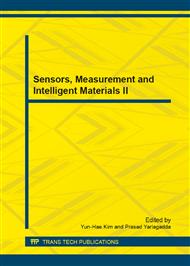p.1522
p.1528
p.1534
p.1538
p.1542
p.1546
p.1551
p.1555
p.1559
Mathematical Modeling and Simulating of Microscan for Area CCD
Abstract:
A mathematical model for simulating microscan of area charge coupled device (CCD) is derived and presented. The model takes into account the effect of fill factor of CCD pixel to image quality and is employed to evaluate image quality improvement introduced by microscan. Imaging results of common imaging mode, diagonal microscan and four-point microscan of area CCD with 64% pixel fill factor have been simulated on Matlab based on the proposed model, using the scene information from an existing image. Then, gray mean gradient (GMG) and energy of Laplacian (EOL) are utilized to evaluate image quality performance. GMGs of imaging results obtained by diagonal microscan and four-point microscan are improved by 3.1346, 4.2200 respectively compared with that of imaging result obtained by common imaging mode, and EOLs are enhanced by 0.2242 and 0.3697 accordingly. Research demonstrates that microscan technique can enhance image quality, and four-point microscan provides more improvement on image quality than diagonal microscan. The model can be extended for simulation of microscan of CCD with other pixel fill factors.
Info:
Periodical:
Pages:
1542-1545
Citation:
Online since:
December 2013
Authors:
Price:
Сopyright:
© 2014 Trans Tech Publications Ltd. All Rights Reserved
Share:
Citation:


